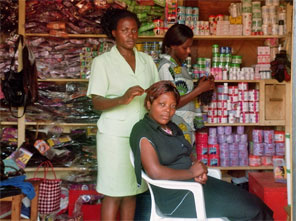|
During the course of this year Hofokam had met the
demands of those customers that had successfully grown their businesses by
expanding the MFI’s loan product range. Now loans were not only offered for
large groups, village banks, but
also for small solidarity groups.
In addition individual business and salary based loans
had been developed. Agricultural
loans were still disbursed on a pilot basis.
Therefore the first version of the performance
model developed earlier for Hofokam needed to be extended. A monthly loan
performance report aggregated by product type and branch detailing amongst
others the portfolio at risk was designed and from now on stored in form of
time series. This report, all loan officer’s client visiting schedules as
well as the income and detailed expense statement by branch and head office
allowed to analyse the current business in form of average quantities derived per product type and branch. For
example it became clear that in branch A the average number of village
banks per loan officer was much
higher than in branch B and that the latter one appeared low also in
absolute terms.
In order to allow strategic planning across all branches and each loan product, these quantities were then set up as parameters that could be modified. The same was done with quantities that are not depended on the specifics of a
|
branch (and product) such as costs of fuel and maintenance for the motorbikes or interest rates and fees. Changing the current value of these parameters for a future assumed scenario would therefore result in the respective future income and cost positions.
A
short workshop for all loan supervisors was held on cash flow analysis. Thereby the influence of business setbacks
onto the client’s ability to pay
due to likely events in this area was visualized by means of a concrete
example. From this basic business
rules and questions to consider before taking / providing a loan were
derived. One of these rules outlined e.g. is the often very hard to be
followed advise to distinguish business and household “accounts”.
The
idea was that each supervisor works out little stories with his respective
loan officers that they could use in turn to illustrate these basic
business rules step by step to their village bank clients during the
bi-weekly meetings.
|
|
Above left: Loan officers admire the work of this successful tailor who has used the loans to
grow his business step by step. By now he owns a shop with all the
necessary tools.
Above right: Hofokam’s loan officer specialised in agriculture
discusses healthcare and other issues with her client who is maintaining
her chicken farming business in an excellent shape.
Right: The next client visit takes place at a hairdresser in the
village who has become popular. She manages offering her customers the
service and products difficult to get otherwise.
|

|